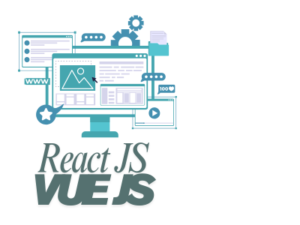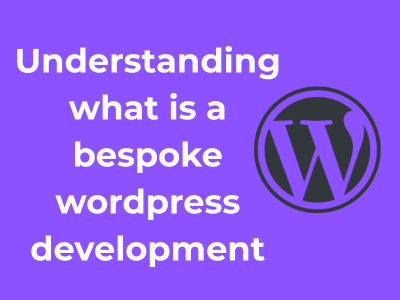When it comes to choosing a front-end library for your web project, understanding the origin story matters. Every framework or library carries the DNA of its creator’s vision, and that DNA continues to shape how it’s used and loved by developers. So, where did ReactJS and VueJS come from, and how have they captured the hearts of their fans?

The Birth of ReactJS
ReactJS was created by Facebook in 2013. Its primary goal? To manage the complexities of building user interfaces in a modern, scalable way. React introduced a revolutionary concept: a virtual DOM that ensures efficient updates and rendering. Facebook still actively maintains it, which is a huge vote of confidence.
But React isn’t just loved for its technical merit. Its widespread adoption by tech giants (think Instagram, Airbnb, Netflix) also speaks volumes. Its robust background means developers can confidently trust it with their next big project. And why wouldn’t they? React’s vast ecosystem, popularity, and longevity have made it a staple in the software development world.
The Rise of VueJS
On the other side, we have VueJS. If React had corporate backing from the very beginning, Vue’s origin feels more personal. It was created in 2014 by Evan You, a former Google engineer, with a vision to craft an intuitive and lightweight framework. Vue was a response to the bulkiness of existing tools—Evan wanted something simpler yet powerful enough for modern applications.
What’s captivating about Vue is its grassroots growth. Without backing from a tech giant, Vue relied on its elegance and simplicity to win over developers. And it worked! Vue’s small learning curve and gentle onboarding process have given it a devoted following, particularly among solo developers and startups. Even so, Vue isn’t just for small projects—it has powered platforms like Alibaba and Xiaomi, proving its versatility.
Popularity at a Glance
When comparing their followings, it’s clear both libraries have strong communities. React leads the way in terms of widespread recognition and use. Enterprises and large teams are often drawn to React due to its established industry reputation.
But don’t count out Vue! It might not have Facebook’s seal of approval, but it boasts a loyal and passionate fanbase. Its simplicity and elegance are contagious, especially among newcomers. If you look at GitHub stars as a measure of love, Vue often edges ahead—but keep in mind that stars don’t always mean enterprise-level reliability.
Differences in Their Approach to State Management
Ah, state management – the heart of every modern JavaScript framework! If you’ve ever heard developers talk about ReactJS and VueJS, you’ve likely heard debates about their state management. Both frameworks have distinct approaches to how state is handled, and understanding this difference can be a game-changer for your project.
ReactJS: A Flexible but Decentralized Approach
With ReactJS, state management is somewhat of a “choose your own adventure” story. Out of the box, React provides you with useState and useReducer for managing state in individual components. These hooks work great for smaller applications or when managing local, simple state, like toggling a modal or tracking form inputs.
However, as your application scales, managing global state becomes more complex. Here’s where React encourages the use of external libraries like Redux, MobX, or Zustand. Redux, in particular, is the most famous companion to React for state management and offers predictable state handling with a strict unidirectional data flow. The caveat? It has a learning curve, and managing all that boilerplate code can be intimidating for beginners.
The flexibility React offers is both a blessing and a curse. On the one hand, you can choose the state management library that best suits your project’s needs. On the other hand, this freedom often means a lack of uniformity across projects, requiring new team members to “get up to speed” with whatever solution was chosen.
VueJS: A Simpler, Built-in Experience
VueJS takes a more opinionated approach to state management, which often makes things easier for developers. For smaller projects, Vue’s built-in reactivity system (called Composition API or Options API) allows you to manage the state within your components seamlessly. It’s intuitive, beginner-friendly, and powerful right out of the box.
For larger applications where global state management is needed, Vue has its own dedicated library called Vuex. And here’s a pro-tip: Vuex is officially maintained by the Vue team, ensuring tight integration and consistent updates. It’s specifically designed to work with Vue, offering features like centralized state storage, getters, and actions that make managing complex state straightforward.
Vue’s approach tends to favor simplicity and structure. There’s less guesswork involved; you won’t spend hours debating which library suits your app or whether to refactor your state-handling pattern. For teams working on tight deadlines or developers newer to state management, this can be a lifesaver. However, some advanced users argue that Vuex can feel rigid compared to the flexibility libraries like Redux offer for React.
Understanding Component Structures: Simplicity vs. Flexibility

When you sit down to develop a front-end application, one of the first things you’ll notice in a framework or library is how it handles components. After all, components are the building blocks of any modern UI. In the case of ReactJS and VueJS, their approaches to component structure differ significantly, and this can influence how you work with them based on your project’s needs.
Simplicity: The VueJS Perspective
Let’s start with VueJS. One of the major appeals of Vue is how intuitive and approachable its component system feels, especially for beginners. A typical Vue component combines the logic, template, and styling in a single .vue file. Here’s what it looks like:
<template>
<div>Hello, Vue!</div>
</template>
<script>
export default {
name: 'HelloWorld',
data() {
return { message: 'Hello, Vue!' };
}
};
</script>
<style scoped>
div {
color: #42b983;
}
</style>
Notice how everything is self-contained? This makes it clean and straightforward. Developers can quickly understand how pieces fit together, making it easier to onboard new team members or revisit older projects. Additionally, Vue provides an HTML-like template syntax, which doesn’t take much effort to grasp, even for someone migrating from vanilla JavaScript or older technologies like jQuery.
Flexibility: The ReactJS Way
React, on the other hand, thrives on flexibility. Instead of using templates, React employs a syntax called JSX, which lets you write HTML directly inside JavaScript. It’s innovative, but it can feel a little strange for those used to separating HTML and JavaScript. Here’s an example of a React component:
import React from 'react';
function HelloWorld() {
return <div>Hello, React!</div>;
}
export default HelloWorld;
See how simple the logic is? But don’t be fooled—React’s strength lies in its ability to support more complex applications. Its unopinionated nature means you can structure your components and their logic exactly as you like. This is a huge plus for developers who need to design intricate, large-scale systems. The downside? This flexibility can be overwhelming for beginners, as it requires you to make more architectural decisions upfront.
Performance Comparison: Handling Real-world Applications
When it comes to performance, both ReactJS and VueJS are like well-trained athletes. They’ve been designed with speed and efficiency in mind, but the way they handle real-world applications highlights their subtle differences. Let’s explore how these frameworks stack up under the hood, without getting bogged down by overly technical jargon!
ReactJS: The Virtual DOM Champion
ReactJS’s greatest performance weapon is its Virtual DOM. Imagine it as a lightweight copy of the actual DOM that React uses to track and apply changes efficiently. In real-world scenarios where large and complex user interfaces are in play, React shines. It updates only the components that need changes rather than re-rendering the entire page.
This efficiency is particularly useful in data-heavy applications like dashboards, e-commerce platforms, or any app where users are performing frequent interactions. React’s advanced algorithms ensure that even under heavy data loads, the application stays responsive.
VueJS: The Smaller Yet Mighty Speedster
While React focuses on its Virtual DOM prowess, VueJS takes pride in being a more compact and lightning-fast solution. Vue also uses a Virtual DOM, but its optimizations for smaller to mid-sized applications give it an edge when it comes to speed of development and execution.
Vue’s reactivity system reacts automatically to data changes, making state updates seamless and fast. Whether you’re crafting a dynamic blog, a mobile-friendly app, or a single-page application, Vue’s lean architecture can make your app feel snappy and efficient.
Handling Large Applications: The Benchmarks Reveal All
- ReactJS: Its component-based architecture makes scaling up easy. Applications like Facebook (created by React’s parent company) thrive under its performance optimization and ecosystem.
- VueJS: Though originally intended for simpler use cases, Vue has proven itself in scaling mid-to-large size applications. Companies like Alibaba utilize Vue for its fast startup times and developer-friendly syntax.
What you’ll notice is that React handles more complex scenarios with ease, while Vue shines in projects where speed of implementation is a key requirement.
Real-life Application: Load Time Matters
Both frameworks produce blazing-fast applications when employed correctly. However, it’s worth noting that Vue’s size – lighter and more compact – can help reduce initial load times for smaller apps. If time-to-interaction is critical for your project, Vue might be your best bet.
On the flip side, React’s ecosystem and libraries – while slightly bulkier – allow you to optimize specific areas of performance in enormous, production-level applications.
Developer Communities: Support, Resources, and Ecosystem
Choosing between ReactJS and VueJS can feel like deciding between two equally delicious desserts. While performance, structure, and state management are key ingredients, the secret sauce in making a framework successful often lies in its developer community. Let’s dive into the world of support, resources, and ecosystem to explore how ReactJS and VueJS stack up in this area.
1. Why Developer Communities Matter
Imagine embarking on a coding project only to find yourself stuck on a bug or unsure how to proceed. This is where developer communities come to the rescue! A strong community means you’ll have access to forums, tutorials, reusable libraries, and even expert advice. Let’s see what each community brings to the table.
2. ReactJS: The Giant with Endless Resources
React is a heavyweight champion with one of the largest communities in the JavaScript world. Since it’s backed by Facebook (now Meta), you can expect continuous updates, solid documentation, and a robust ecosystem of tools.
Here’s why the ReactJS community is thriving:
- Massive user base: With millions of developers regularly contributing, you’re unlikely to encounter a problem that hasn’t been discussed before.
- Packages galore: From UI component libraries like Material-UI to tools for state management like Redux, the React ecosystem is virtually endless.
- Learning resources: React offers extensive documentation, while sites like freeCodeCamp, YouTube channels, and online courses add more layers of learning opportunities.
So, if you’re jumping onto the React bandwagon, you’ll have an army of developers ready to help you on platforms like Stack Overflow, Reddit, and GitHub.
3. VueJS: The Supportive Understudy with a Loyal Following
VueJS may not be as colossal as React, but this cozy and welcoming community prides itself on simplicity and approachability. Its creator, Evan You, often interacts directly with users, fostering an intimate connection with the framework’s contributors.
In Vue’s corner, we have:
- A friendlier learning curve: Vue’s official documentation is nothing short of a masterpiece. Beginners love how clear and concise it is compared to other frameworks.
- Focused ecosystem: Resources like Vue CLI, Vue Router, and Vuex offer developers a tightly knit toolset to streamline app building.
- Interactive community: Since Vue is often preferred by smaller teams, the community is known for being approachable, inclusive, and super helpful. Platforms like Vue Forum shine in terms of genuine support and engagement.
Though smaller, Vue’s community is perfect if you’re looking for a close-knit environment and a framework that feels easy and natural to adopt.
4. Which Community Should You Choose?
If size and variety are your priority, React wins hands down. Its mature ecosystem and robust support channels provide everything you need and more. It’s ideal for larger teams or developers looking to tackle enterprise-level projects.
On the other hand, if you value a personal touch and a framework that’s approachable for individual developers or smaller teams, Vue might be your best bet. Its loyal community and streamlined ecosystem ensure you’re not overwhelmed but still adequately supported.
Integration Options: How They Fit with Other Tools
Let’s talk about the superpower of any JavaScript framework: integration! Whether you’re a developer pondering your next project or someone who loves seeing tech tools work seamlessly together, this topic is worth diving into. When it comes to ReactJS and VueJS, their ability to “play nice” with other tools is a critical factor. Spoiler alert—both are pretty awesome, but in different ways. So, let’s unpack their integration magic!
ReactJS: The Universal Plug-And-Play Engine
ReactJS is like that friend who’s happy to collaborate with everyone. React’s ecosystem is massive, and its flexibility allows it to blend beautifully across various libraries, tools, and even other programming languages. Thanks to its powerful and modular setup, React can scale from a simple UI for a small startup app to a complex, enterprise solution.
- React integrates naturally with popular state management tools like Redux or Zustand. If you’re already using Redux for a big project, React will slip into your workflow smoothly.
- React is a fantastic choice if you’re looking into server-side rendering (think of blazing fast web apps). Its library,
Next.js, is the gold standard for this task. Plus, it’s worth mentioning that React’s team officially backs JSX, making templating intuitive! - Need animations or data visualization? React isn’t alone—it meshes perfectly with libraries like
Framer MotionorD3.js. - When you want to use mobile-first frameworks, React extends its brilliance with React Native. You get to deploy apps on Android, iOS, Web… you name it!
React essentially breaks down the barrier between your tools, offering you the lego blocks to design whatever architecture you need. But what’s particularly appealing is the sheer number of third-party libraries ready to complement React at every step.
VueJS: Simple, Focused, and Highly Adaptable
Now enter VueJS, the democratic and approachable contender. While React is versatile, VueJS keeps things refreshingly simple. Vue has a lot going for it when it comes to integrating neatly with existing tools and frameworks. This framework shines especially in scenarios where gradual adoption is needed—you can embed Vue into existing HTML or JavaScript-based applications without disrupting everything.
- Vue’s official libraries are well-developed, meaning many core needs—like state management (Vuex) and routing (Vue Router)—have native solutions. These tools feel like a natural extension of Vue, so no need for extra effort to marry external libraries.
- For developers eyeing smaller, focused tools when building SPAs or transitioning from older technologies, Vue fits like a glove. It’s especially popular within CMS-based frameworks like Laravel.
- Vue is also ideal for prototyping tools and interactive components. Tools like Nuxt.js, the Vue alternative to Next.js, make server-side rendering a breeze.
- Don’t discount Vue’s ecosystem—libraries like Vue Apollo (GraphQL integration) and Vue CLI make life a lot easier.
If React thrives on its ecosystem’s expansiveness, Vue excels because of its straightforwardness. Its integration options might feel less overwhelming, which is perfect for developers who want cohesion and clarity without the need to shop for extra libraries constantly.
Scalability and Long-term Maintenance
So, you’re wondering which framework—React or Vue—can handle your project’s scalability needs and keep things running smoothly for years to come? Let’s dive deep into how these two heavyweights stack up when it comes to becoming your long-term programming partner.
Why Scalability Should Be on Your Radar
First, let’s chat about why scalability matters. Whether it’s an ambitious startup dreaming of user growth or a well-established enterprise managing millions of requests, scaling a project means your tech should grow with you. But here’s the kicker—you also don’t want maintenance headaches slowing you down when the road gets bumpy. Enter React and Vue, two frameworks primed to handle these challenges in their own unique ways.
React’s Superpower for Scalability
React clearly boasts popularity points in the scalability arena. Why? Because its component-based architecture makes scaling an app feel more like stacking LEGO blocks—logical, structured, and adaptable. For larger, more complex apps, React’s emphasis on reusable components is a dream come true.
Additionally, the freedom React gives you is especially handy for scaling. Since React is library-first rather than framework-first, you’re not locked into how you scale. Need to swap in a different router or state management tool? No problem! This modular flexibility is why enterprise giants like Netflix and Facebook thrive with React.
Vue: Scalable with a Smaller Footprint
Vue does an excellent job of balancing simplicity with scalability. Its single-file components are like neat little packages—perfect for scaling projects without adding unnecessary complexity.
Many developers appreciate Vue’s “out-of-the-box” features. For smaller teams or projects that aim to grow gradually, Vue is a strong contender because it minimizes configuration demands while still paving the way for future expansion.
On top of that, Vue’s ecosystem is surprisingly rich. Need state management? Vuex is there, fully integrated. For routing, there’s Vue Router. Since it’s less fragmented compared to React’s endless sea of libraries, Vue often feels like a smoother tool for scaling projects without inducing decision fatigue for developers.
Which One Wins for Long-term Maintenance?
Maintenance is where the conversation gets interesting. React fosters long-term stability through its massive ecosystem and robust community support. When Facebook backs your framework and major companies rely on it, you can bet React is staying relevant.
But, the downside? React evolves rapidly, which means frequent updates. While this is good for staying modern, it could lead to library churn issues, where you must rewrite part of your app to stay up-to-date.
Vue, on the other hand, is designed to be more beginner-friendly, and as such, it strives to minimize the “breaking changes” between major versions. For small to medium teams, this reliability in updates can feel like a lifeline for long-term maintenance.
That said, while Vue’s community is vibrant, it’s still smaller than React’s. Fewer developers could mean fewer tools or resources over time for handling specific or unique scaling challenges.











